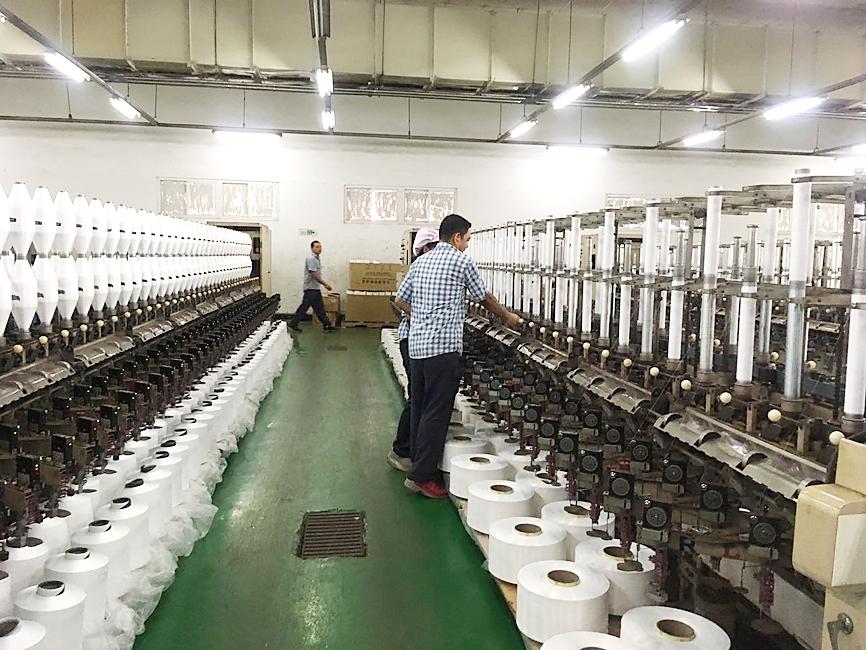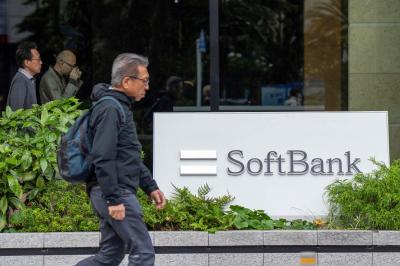The climate gauge for the nation’s manufacturing sector in September remained “yellow-red” for the fifth consecutive month, reflecting fast growth, even though port congestion and supply chain disruptions posed uncertainty and drove up operational costs, the Taiwan Institute of Economic Research (TIER, 台經院) said yesterday.
The composite index for the manufacturing sector fell 0.21 points to 16.27 from August, as power rationing and emission restrictions in China slightly weighed on input activity, but the index remained just inside the “yellow-red” range of 16 to 18.5 points, the Taipei-based institute said.
EVERGRANDE WOES

Photo: Chen Rou-chen, Taipei Times
While cash woes plaguing Chinese property developer China Evergrande Group (恆大集團) also dampened sentiment, share prices of electronics, machinery equipment and telecommunication companies picked up, lending support to the overall score, it said.
The institute uses a five-color system to gauge manufacturing activity, with “blue” suggesting recession, “yellow-blue” a slowdown, “green” stability, “yellow-red” fast growth and “red” overheating.
It was the seventh month this year that the manufacturing sector reported a yellow-red reading, the institute said.
Among the five components in the composite index, the sub-index on the operating environment gained 0.38 points, while selling prices were flat, as the peak season might be over for some sectors with correction pressure building, it said.
The input measure lost 0.29 points and the cost tracker shed 0.01 points, it added.
The reading for industries supplying essential goods, such as textile products, was yellow-red, although lockdowns in Vietnam caused supply chain disruptions, it found.
Most Taiwanese textile companies operate manufacturing facilities in Vietnam to save on production costs.
Strong exports pushed up demand for cardboard boxes, causing their prices to increase, the institute said.
The measure also turned yellow-red for manufacturers of petrochemical and plastic products, supported by soaring crude and oil product prices, it said.
However, container shortages and port bottlenecks abroad have delayed their input schedule, it added.
Base metal suppliers reported double-digit percentage growth in business as they continued to benefit from increasing infrastructure spending in the US and Europe, the institute said, adding that machinery equipment vendors were less impressive, reporting steady sales.
Business at electronic component providers remained robust on the back of new product launches and insatiable demand for 5G technology and Internet of Things applications, the institute said.
PENT-UP DEMAND
Auto parts suppliers reported price hikes amid pent-up demand for vehicles, but port congestion and a global chip shortage stretched delivery times, causing the vehicle market in China to slow down, which has turned the reading for related sectors in Taiwan to yellow-blue, it said.

Japanese technology giant Softbank Group Corp said Tuesday it has sold its stake in Nvidia Corp, raising US$5.8 billion to pour into other investments. It also reported its profit nearly tripled in the first half of this fiscal year from a year earlier. Tokyo-based Softbank said it sold the stake in Silicon Vally-based Nvidia last month, a move that reflects its shift in focus to OpenAI, owner of the artificial intelligence (AI) chatbot ChatGPT. Softbank reported its profit in the April-to-September period soared to about 2.5 trillion yen (about US$13 billion). Its sales for the six month period rose 7.7 percent year-on-year

CRESTING WAVE: Companies are still buying in, but the shivers in the market could be the first signs that the AI wave has peaked and the collapse is upon the world Taiwan Semiconductor Manufacturing Co (TSMC, 台積電) yesterday reported a new monthly record of NT$367.47 billion (US$11.85 billion) in consolidated sales for last month thanks to global demand for artificial intelligence (AI) applications. Last month’s figure represented 16.9 percent annual growth, the slowest pace since February last year. On a monthly basis, sales rose 11 percent. Cumulative sales in the first 10 months of the year grew 33.8 percent year-on-year to NT$3.13 trillion, a record for the same period in the company’s history. However, the slowing growth in monthly sales last month highlights uncertainty over the sustainability of the AI boom even as

AI BOOST: Next year, the cloud and networking product business is expected to remain a key revenue pillar for the company, Hon Hai chairman Young Liu said Manufacturing giant Hon Hai Precision Industry Co (鴻海精密) yesterday posted its best third-quarter profit in the company’s history, backed by strong demand for artificial intelligence (AI) servers. Net profit expanded 17 percent annually to NT$57.67 billion (US$1.86 billion) from NT$44.36 billion, the company said. On a quarterly basis, net profit soared 30 percent from NT$44.36 billion, it said. Hon Hai, which is Apple Inc’s primary iPhone assembler and makes servers powered by Nvidia Corp’s AI accelerators, said earnings per share expanded to NT$4.15 from NT$3.55 a year earlier and NT$3.19 in the second quarter. Gross margin improved to 6.35 percent,

FAULTs BELOW: Asia is particularly susceptible to anything unfortunate happening to the AI industry, with tech companies hugely responsible for its market strength The sudden slump in Asia’s technology shares last week has jolted investors, serving as a stark reminder that the world-beating rally in artificial intelligence (AI) and semiconductor stocks might be nearing a short-term crest. The region’s sharpest decline since April — triggered by a tech-led sell-off on Wall Street — has refocused attention on cracks beneath the surface: the rally’s narrow breadth, heavy reliance on retail traders, and growing uncertainty around the timing of US Federal Reserve interest-rate cuts. Last week’s “sell-off is a reminder that Asia’s market structure is just more vulnerable,” Saxo Markets chief investment strategist Charu Chanana said in